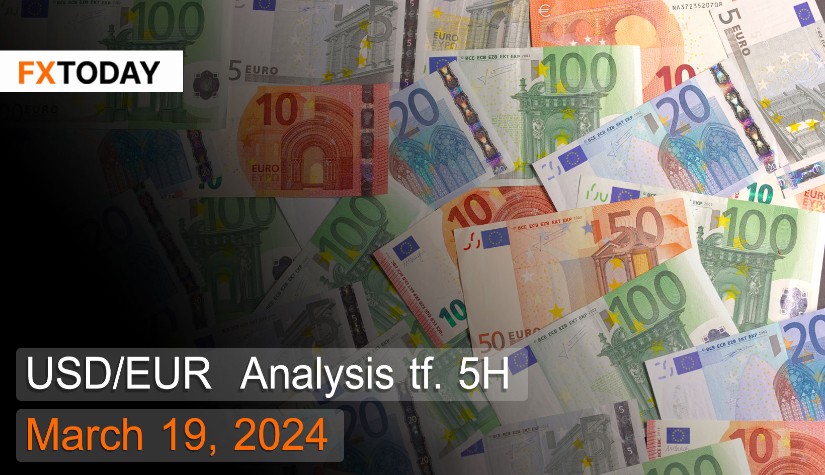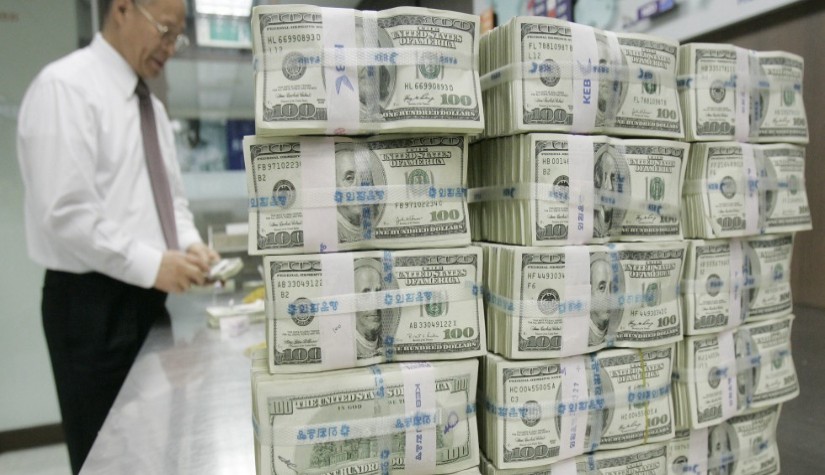The ECB may start considering reducing interest rates soon.
The euro has weakened slightly as investors received positive signals from ECB officials at the recent meeting. Investors also need to monitor the Federal Reserve's policy meeting on Wednesday. Additionally, an increase in US producer prices on both a yearly and monthly basis may make it more difficult for the Federal Reserve to control inflation.
Luis de Guindos, ECB Vice President, stated that the central bank will begin considering interest rate cuts in June, emphasizing the need to gather additional data before implementing any policy changes. Christine Lagarde, ECB President, mentioned that the central bank has just started discussing the possibility of lowering interest rates in the near future, citing a decrease in inflation rates. Philip Lane, Chief Economist at the ECB, supports lowering interest rates in the second quarter to support greater economic flexibility and reduce consumer burdens.
The Eurozone's trade surplus was €11.4 billion in January compared to a deficit of €32.6 billion in the same month last year. Exports increased by 1.3% year-on-year to €225.9 billion, driven by higher exports of chemicals and machinery, which rose by 2.2%. Meanwhile, imports decreased by 16.1% to €214.5 billion, reflecting a significant decline, particularly in imports of fuel and industrial goods.
Industrial production in the Eurozone decreased by 3.2% month-on-month in January, marking another contraction, mainly due to a rapid decline in capital goods production by 14.5% due to weak demand. Additionally, the decline in capital goods production indicates that the production of other necessary goods requiring capital goods has also decreased.
The economic confidence index declined to 95.4 in February, lower than market expectations of 96.7. Confidence continues to decrease consistently. This decline is attributed to businesses facing high inflation, increased borrowing costs due to interest rate hikes, and weakened foreign demand, resulting in a decrease in confidence to -9.5 for manufacturers. Meanwhile, service providers' confidence decreased to 6.0, indicating an economy that may be slowing down soon.
Techical analysis data (5H)
Resistance: 0.9234, 0.9245, 0.9262
Source: Investing.com
Buy/Long 1: If the price touches support in the price range of 0.9189 - 0.9206 but cannot break the support at 0.9206, you may set a TP at approximately 0.9245 and SL at around 0.9178 or according to your acceptable risk.
Buy/Long 2: If the price breaks the resistance in the price range of 0.9234 - 0.9245, you may set a TP at approximately 0.9262 and SL at around 0.9189 or according to your acceptable risk.
Sell/Short 1: If the price touches resistance in the price range of 0.9234 - 0.9245 but cannot break the resistance at 0.9234, you may set a TP at approximately 0.9189 and SL at around 0.9262 or according to your acceptable risk.
Sell/Short 2: If the price breaks the support in the price range of 0.9189 - 0.9206, you may set a TP at approximately 0.9178 and SL at around 0.9245 or according to your acceptable risk.
Pivot point March 19, 2024 08:13 PM. GMT+7
|
Name
|
S3
|
S2
|
S1
|
Pivot Points
|
R1
|
R2
|
R3
|
| Classic | 0.9178 | 0.9189 | 0.9206 | 0.9217 | 0.9234 | 0.9245 | 0.9262 |
| Fibonacci | 0.9189 | 0.92 | 0.9206 | 0.9217 | 0.9228 | 0.9234 | 0.9245 |
| Camarilla | 0.9215 | 0.9217 | 0.922 | 0.9217 | 0.9225 | 0.9228 | 0.923 |
| Woodie's | 0.918 | 0.919 | 0.9208 | 0.9218 | 0.9236 | 0.9246 | 0.9264 |
| DeMark's | - | - | 0.9211 | 0.922 | 0.9239 | - | - |
















